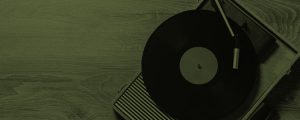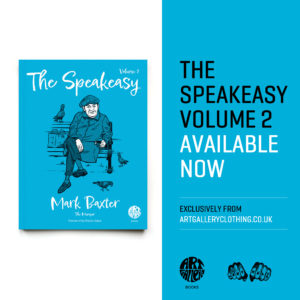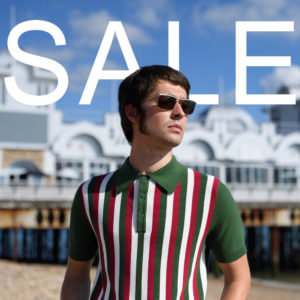
For years, we have been fed the fact that the constant presence of Yoko Ono, then never two foot away from John Lennon, was one of the main reasons the band eventually split. Like a lot of us, I got used to that explanation, and then I saw Get Back by Peter Jackson. Yes, she was nearly always there, but so were the other partners and friends of the Fabs and anyway, from the most part of what I saw, the rest of the band and even Lennon on occasions, basically ignored her as they got creative.
At one-point, Macca simply stated ‘It really isn’t that bad. They just want to stay together,’ even though George got into a row with Lennon when Yoko took one of his chocolate digestives without asking. Ono commented on it later herself, saying ‘I don’t think I could have even tried to break them up.’
The more I look at it, lazy journalism, and yes a heavy dose of racism in general, all contributed to give her a bit of a kicking. Yes, she was a little odd, and had a voice like a fire in a pet shop, but looking back it does all seem well over the top, so maybe it’s time for a fresh evaluation.
Yoko – meaning ‘ocean child’ – was born into a very privileged family set up Tokyo, in February 1933. Her father Eisuke, a Christian, was a highly paid banker and mother Isoko, a Buddhist, was a classical pianist. Eisuke was working in America at the time of Yoko’s birth and she was two, by the time he first saw her. Her brother, Keisuke, was born in 1936. The family had 30 servants at their beck and call and from the age of 4, Yoko learnt the piano at the exclusive ‘Peers School.’
Whilst her father continued travelling with his banking activities, the family remained in Tokyo and were still there during the final months of fire bombing in World War Two, before escaping to the mountains. The wealthy goods the family once had, had then to be traded for food, as starvation gripped parts of the country. News then eventually reached them that Eisuke was in a concentration camp in French Indochina, Vietnam as it became later.
Whilst Yoko resumed her studies in the ‘Peers School’ after the war, her family moved to Scarsdale in the US. Following her graduation and a brief spell at university, she then joined her family there and quickly adopted a more bohemian lifestyle. This included eloping with the Japanese composer Toshi Ichiyanagi, who was then studying in New York City. Indeed, her interest in the Avant Garde, eventually took her to New York and she began to develop her art, whilst working as a secretary and teaching at the Japan Society.
She had her first art exhibition in 1961, organised by George Maciunas of the Fluxus Group and she took a composition class under the teaching of neo-Dadaist composer john Cage . She used her rundown, downtown loft space as a studio and organised concerts there of her own radical music and conceptual art . The loft was a long way from her rich upbringing , having no electric, heating or lift to its fourth-floor situation.
When preparing to divorce Ichiyanagi, Ono returned to the family home suffering from depression, and spent some time in a mental institution to recover. Once improved and finally divorced , she married musician and art promoter Anthony Cox in March 1963, and gave birth to a daughter Kyoko in the August of that year. The marriage didn’t last long however, but she and Cox stayed together to aid their respective work. Yoko introduced her ‘Cut Piece’ in 1964, which consisted of her offering a pair of scissors to members of the audience, to then come up and cut off a piece of her ‘Sunday best’ clothing which they could then keep. The idea behind it all was to ‘Confront issues of gender, class and cultural identity.’ Yoko also made a series of films from 1964 to 1972, including ‘Bottoms’ which featured a series of bums in close up.
She then visited London in 1966 and she and John Lennon famously met on November 7th at the Indica gallery, where she was exhibiting her conceptual art. Lennon popped in at a private view and climbed aboard one artwork, called ‘Ceiling Painting/Yes Painting,’ which consisted of a white step ladder, with a magnifying glass attached to it at the top. This was used to then view the word ‘yes’ on the ceiling . John liked the work.
‘It’s a great relief when you get up the ladder and you look through the spyglass and it doesn’t say ‘No’ or ‘Fuck you’
Yoko feigned not knowing who Lennon was, though she later admitted ‘I was very attracted to him. It was a really strange situation.’
John – ‘That’s when we locked eyes, and she got it and I got it and, as they say in all the interviews we do, the rest is history.’
Their ‘friendship’ developed, and Lennon then sponsored a new show of Yoko’s . His wife Cynthia, smelling a rat asked why Yoko was calling at their home, only to be told Yoko was trying to get money for her ‘avant-garde bullshit.’
When in India in 1968, Lennon wrote the song Julia and included the line ‘Ocean child calls me,’ a direct reference to Yoko. Later, when Cynthia was on holiday, Yoko stayed at Lennon’s home and they recorded together and sealed their relationship. Lennon and Cyn divorced in late 1968, by which time Yoko had suffered a miscarriage of a child she and John were expecting. She and John then in effect became one, seemingly always together and worked on Avant Garde recordings, such as Two Virgins with its cover featuring the couple naked, and Yoko sang on the White Album in 1968.
They married in Gibraltar in March 1969 and honeymooned in bed for a week in Amsterdam, campaigning for world peace, and then followed that with a similar event in Montreal where they recorded the song Give Peace a Chance. Then the ‘Bagism’ performances began, which saw them sitting in a cloth bag whilst giving interviews, as a comment on prejudice. All of the above, being later beautifully captured in the song The Ballad of John and Yoko.
John had become John Winston Ono Lennon by deed poll in April 1969 and the couple took up residence at Tittenhurst Park in Berkshire. Their group the Plastic Ono Band was used for more personal releases such as Give Peace a Chance, Cold Turkey and the album Live Peace in Toronto. Late 1971 saw the release of Happy Christmas War is Over which of course, has now gone on to become a Christmas standard.
Cracks appeared in their relationship in the early 1973, said to be partly due to Lennon being up for deportation from the US and Yoko not having access to her daughter Kyoko, after her second husband Anthony Cox received custody, due to Yoko’s drug situation when they spilt up.
To ease the pressure felt all round, John, with Yoko’s blessing, became involved in an 18 month long, ‘lost weekend’ with assistant May Pang. A reconciliation in late 1974, was aided from what might appear to be an unusual source. Yoko has acknowledged that it was in fact Paul McCartney, who passed on a message from her to John, which set the reunion in motion. As a result of that, their son Sean was born on October 9th, 1975, Johns 35th Birthday.
Totally besotted with the new arrival, Lennon took a five-year break from recording to be at home with Sean. Then came a ‘JFK’ moment for many of my generation, when an event is so massive, you know exactly where you were, when you first heard about it. The date was December 8th, 1980, the day that John was shot dead by stalker fan Mark David Chapman.
It later transpired John had left Julian, his son with first wife Cynthia, out of his will. A court case ensued and remained unresolved until 1996. The rejection of Julian by his father understandably cut deep
Julian – ‘When Dad gave up music for a couple of years to be with Sean, (I wondered) why couldn’t he do that with me?’
Yoko continued to release music, including the 1984 tribute album Every Man Has a Woman featuring artists like Roberta Flack and Elvis Costello performing songs written by Yoko, a project started by John before his untimely death, as well as her and John’s final work together Milk and Honey. Her ‘Strawberry Fields’ memorial to John, situated opposite the Dakota building where they lived, and the scene of John’s murder of course, opened on October 9th 1985, on what would have been his 45th birthday.
In recent years, Yoko has concentrated on promoting various causes including world peace, the refugee situation, anti-fracking, and raising funds for AIDS and HIV awareness. In 2009 Yoko became a grandmother when daughter Kyoko gave birth to daughter Emi.
2017, saw the announcement from the National Music Publishers’ Association that, henceforth, Yoko Ono would be credited as a co-writer on the 1971 song Imagine . John had admitted that sexism had played a part in him not listing Yoko as a co-writer, knowing it was her idea and a lot of the lyrics were hers.
So, maybe, finally, the tide is turning for Yoko. I’m not sure she’s too bothered anyway, as she appears to me , to have marched to her own beat for many years, regardless of what people thought of her. To me, it all seems like the whole thing, her whole life, was one big art experiment.
‘Art is like breathing for me. If I don’t do it, I start to choke.’
The Mumper of SE5
THE SPEAKEASY VOLUME 2 – AVAILABLE NOW
THE SPEAKEASY Volume Two by Mark Baxter (The Mumper)
Illustrations by Lewis Wharton
Foreword by Rhoda Dakar
Available to ORDER here
ART GALLERY CLOTHING
Further styles added to the SALE
JOIN US
Sign up to our newsletter and receive an exclusive promo code, latest news & Art Gallery Clothing offers.
Newsletter Signup




